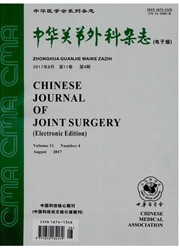

 中文摘要:
中文摘要:
骨关节炎进展缓慢,早期症状不明显,诊断较为困难。而生物标记物为其早期诊断提供了新的方案。但相较于其他负重的关节如膝和髋,踝关节更不容易出现退行性关节疾病,其对OA和退行性关节疾病具有更高的抵抗作用。另外,不同于膝关节OA,踝关节OA多发生在旋转型踝关节骨折后。随着对生物标记物研究的深入,大量的生物标记物被证明与OA的病程进展有关,但有学者研究发现踝关节OA与膝关节OA之间的生物标记物并不完全相同。以往的研究并未进行区分,因此将来的研究重点应该是分别确定膝关节及踝关节OA的SF和血清中这些生物标记物具体浓度所代表的风险大小,并希望在研究趋于成熟后可以制定出评分标准,为将来的临床治疗提供指导。
 英文摘要:
英文摘要:
The development of osteoarthritis is very slow and those traditional diagnostic methods are not sensitive to the patients in early stage. The biomarkers would become a new diagnostic method. The ankle is relatively resistant to the development of degenerative joint disease and osteoarthritis compared to other major weight bearing synovial joints such as the knee and hip. Osteoarthritis of the ankle joint is a common sequela of ankle trauma, which is most frequently caused by rotational ankle fractures. With the development of molecular biology, more and more studies showed that various cytokines may play an important role in the occurrence and development of osteoarthritis, but some studies have shown that there are several biomarkers different between the knee and ankle osteoarthritis. These results are intriguing as they suggest that the analysis of synovial fluid, from knee and ankle joint respectively as well as the serum may be the guidance of operative intervention. Further investigations are necessary for more accurate identification of the levels and markers which are clear indicators of the presence or absence in the intra- articular pathology. Future studies are warranted to better evaluate and treat those with concomitant extra- articular and intra-articular pathology.
 同期刊论文项目
同期刊论文项目
 同项目期刊论文
同项目期刊论文
 期刊信息
期刊信息
